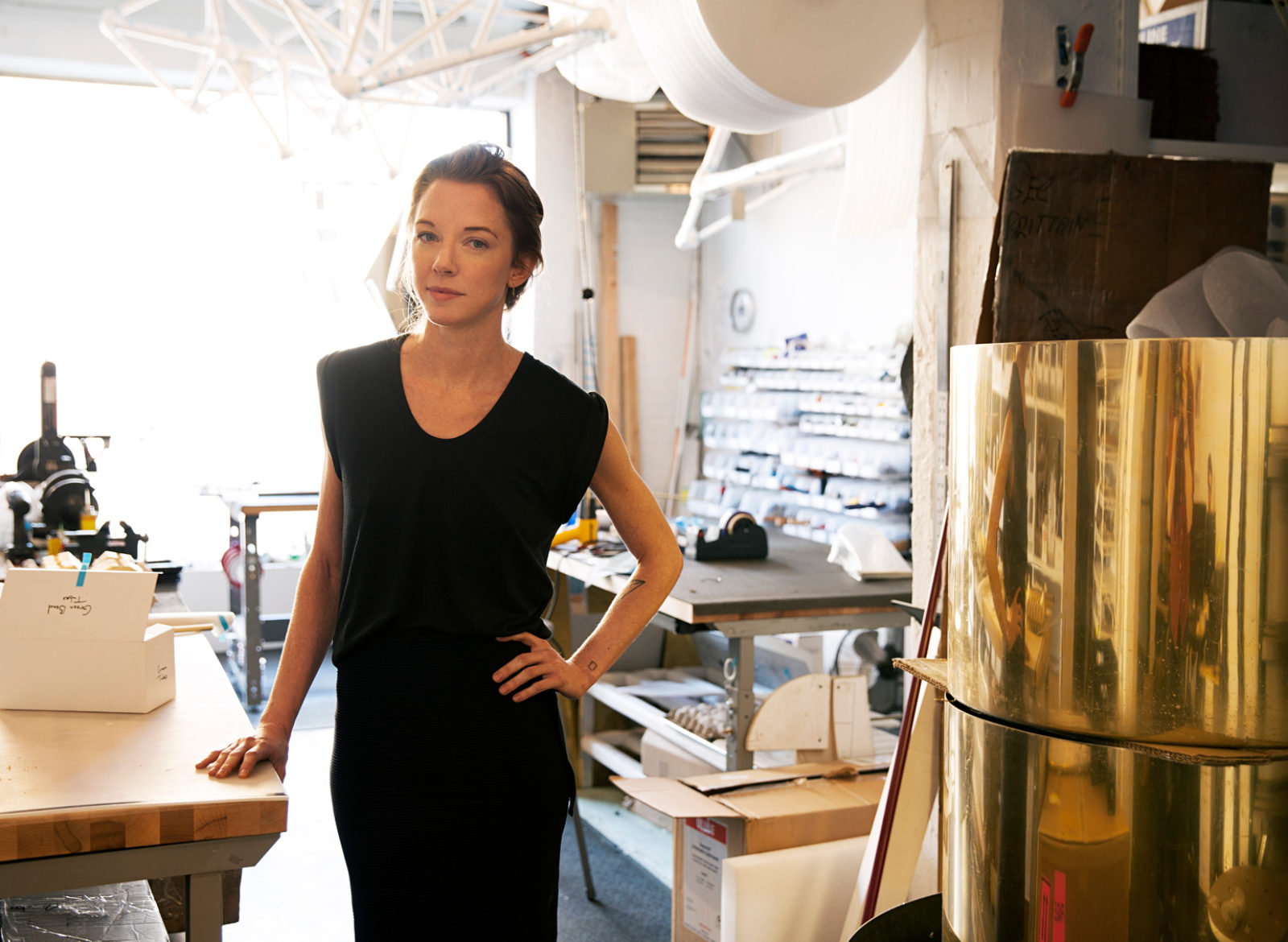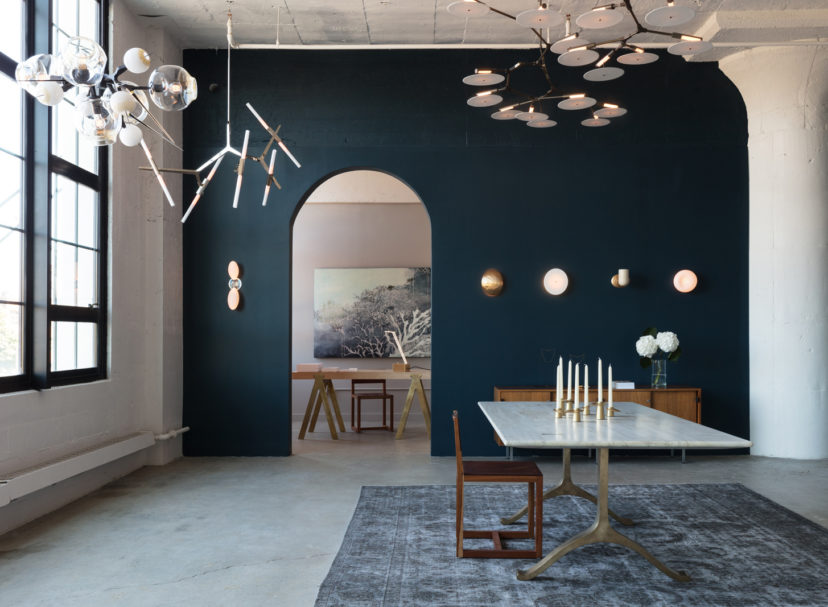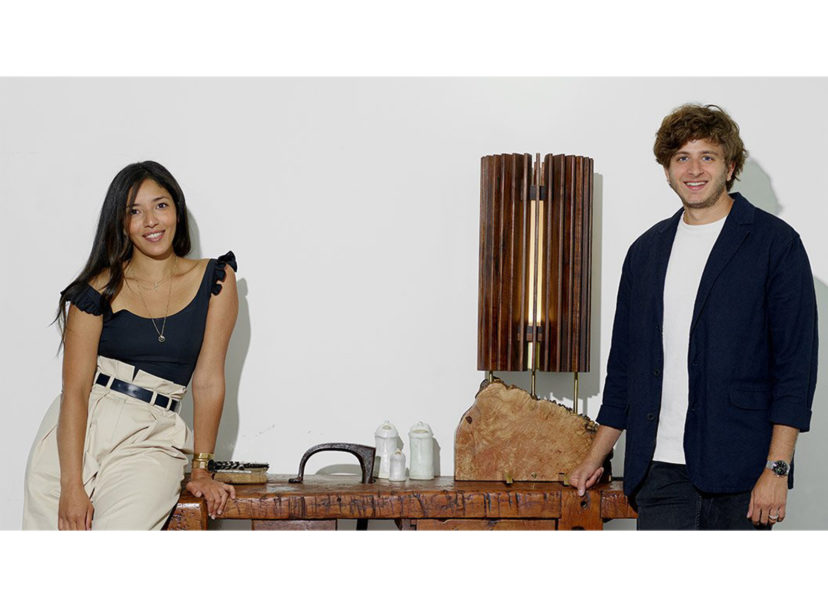Text: Alec Coiro
Cover Photo: Jesse Dittmar
Photo: Lauren Coleman
I came to Bec Brittain’s studio to see a piece called Mercury that was installed in her showroom, and I left with a fuller understanding of everything from electronics to hard-edge origami to leather crafting. I also left an all-around fan Bec Brittain fan, a true font of wisdom, design, and knowledge. How she can spread her passions among so many things without it growing thin is one of her many marvels.
Mercury is unmistakably a piece by Brittain; the way the lighting forms the lines in the piece’s geometry is a classic technique of hers. What makes Mercury special is its imposing beauty that is both monolithic from a distance and detailed when approached. The details consist of tasseled leather, which Brittain painstakingly makes by hand, a process she learned — unpretentiously — from ‘80s tassel-making crafts books. “The thought was to bring something more material and more central back to my work, and the fact that I’m making all the tassels by hand. I could teach someone else to do it, but the point is to bring the personal back to my work. I like that.”
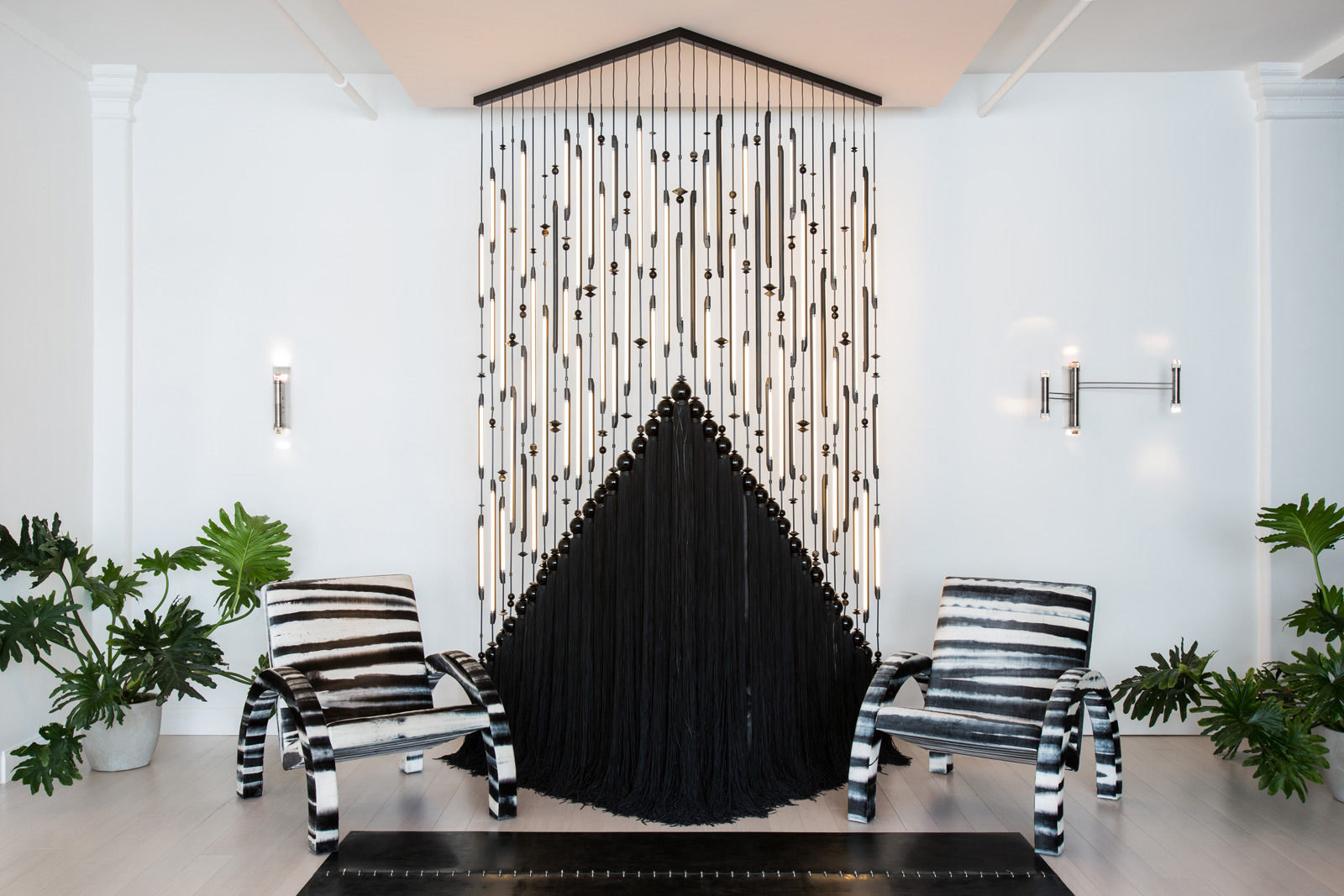
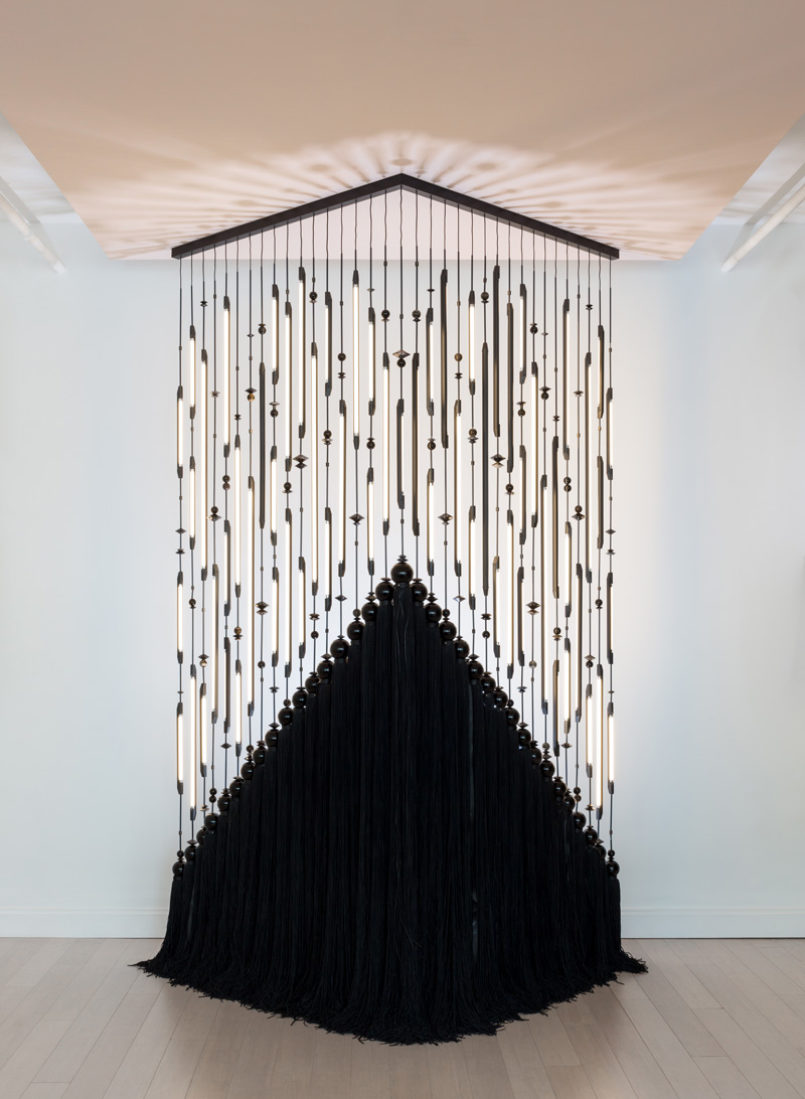
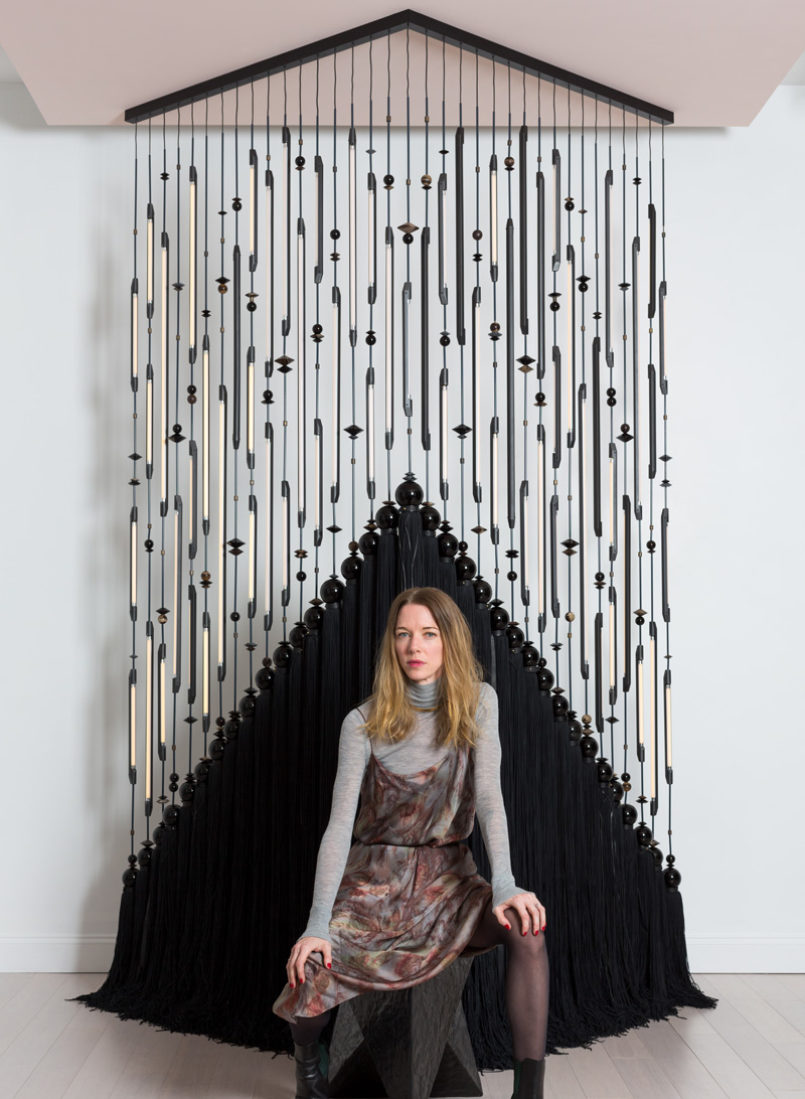
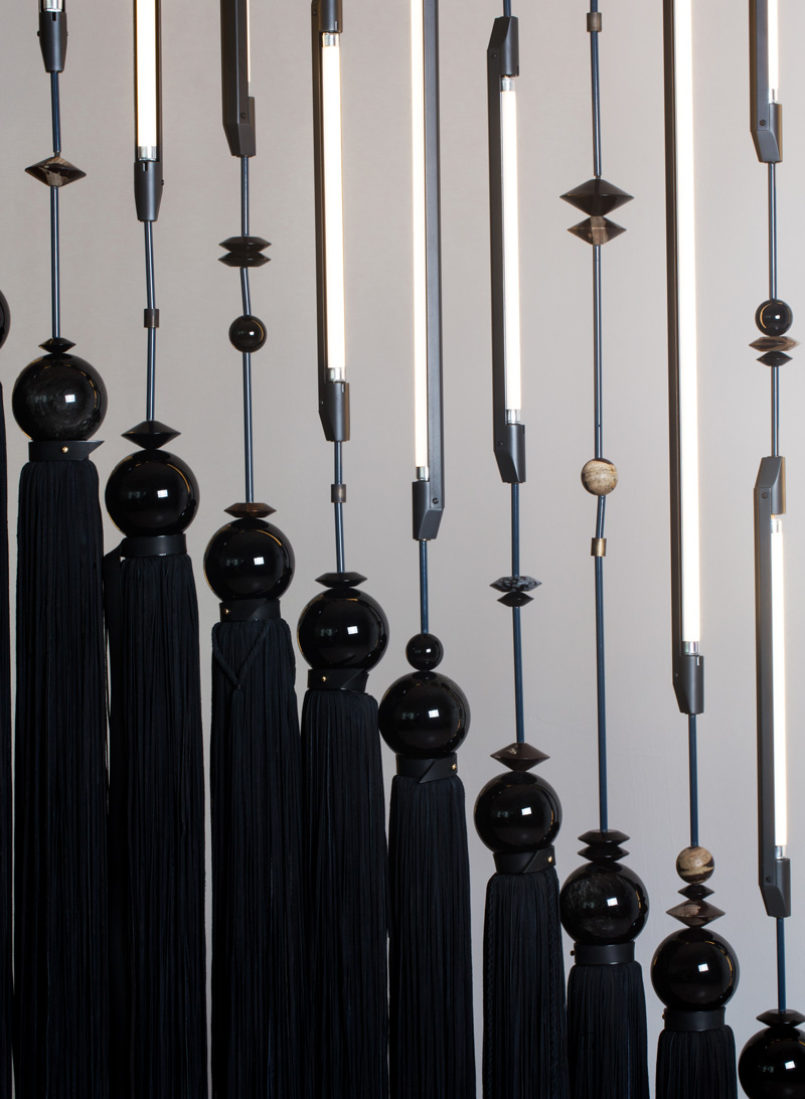
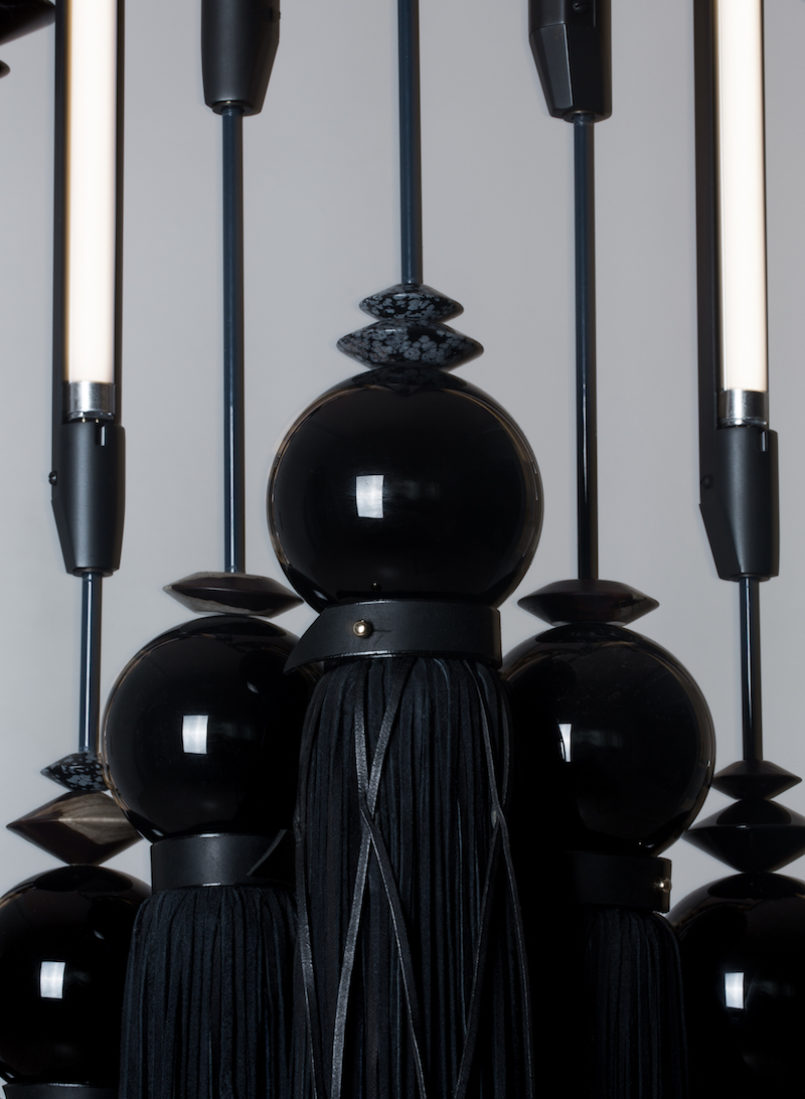
Given her attraction to craft and the meditative powers of handwork, I ask her if she’s always been attracted to craft and the answer she gives traces a career path from sewing her own clothes as a teenager to her job with Lindsey Adelman, the last entry on her C.V. before creating her own brand. “My dad was a woodworker and my mom’s a painter so I just grew up making stuff. Figuring out what I wanted to make as a grownup was a long process. I started at Parsons thinking I was going to be a fashion designer because I spent my teenage years sewing. I realized that I didn’t want to be in a trend business, so I went into product design: didn’t like it. At the time they were essentially teaching you how to make Ikea stuff, and that just didn’t work for me, so I made my own curriculum and got a philosophy degree — design-philosophy — from NYU, and then got an architecture degree from AA, so I could read all the philosophy I’d been reading and draw diagrams of it instead of writing papers. By chance, I wound up designing and producing really high-end door hardware. That was the first time I worked in metal. That moment of opening up the box of custom metal parts that you designed…there was something there that was important. Door hardware wasn’t really my calling, but I then ended up at Lindsey Adelman’s because my machinist recommended me to her because it’s all a very small world.”
What she also alluded to in the telling of her origin story is the twin, competing pulls of art and design. She describes herself as having had “a foot in both boats.” While Mercury is certainly an object d’art, she ultimately prefers design and the boundaries it imposes. “Lighting helps me makes sculptures, but I also really like having boundaries: like it has to light up. I get structure and I get geekery.”
I would say that she has an artist’s eye for geekery. Her Maxhedron light, for example, is a magical creation that completely transforms itself when turned on, which is made possible by two-way mirrors, a basic but effective bit technology so often overlooked by designers. “Reflection is the complement to light. When you’re working with light you’re either working with the source or the reflection of it, and so mirrors seemed obvious and 2 way mirrors are not very high tech, they’ve been around for awhile, and yet it’s such an amazing material for a lighting designer to explore because it literally transforms.”
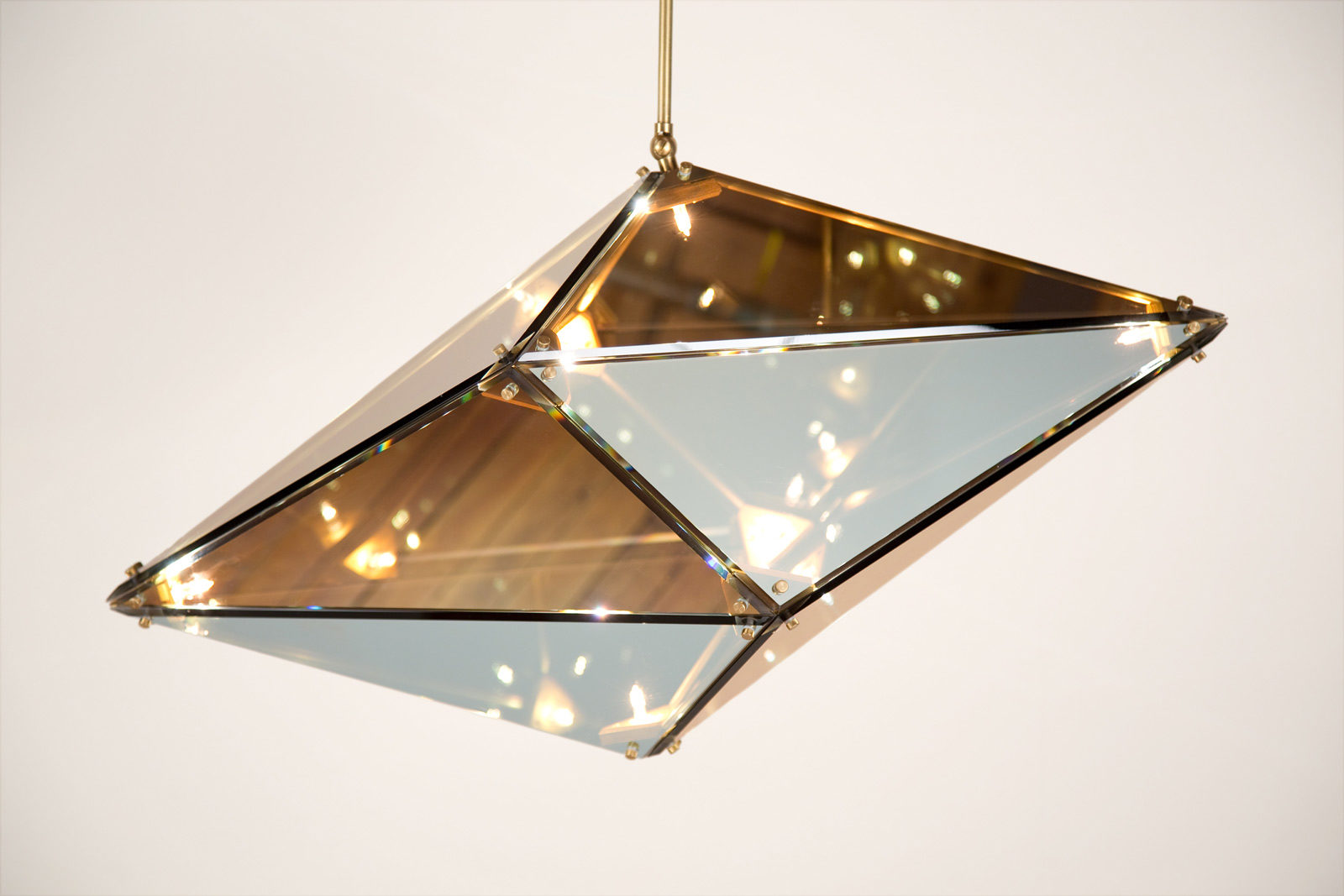
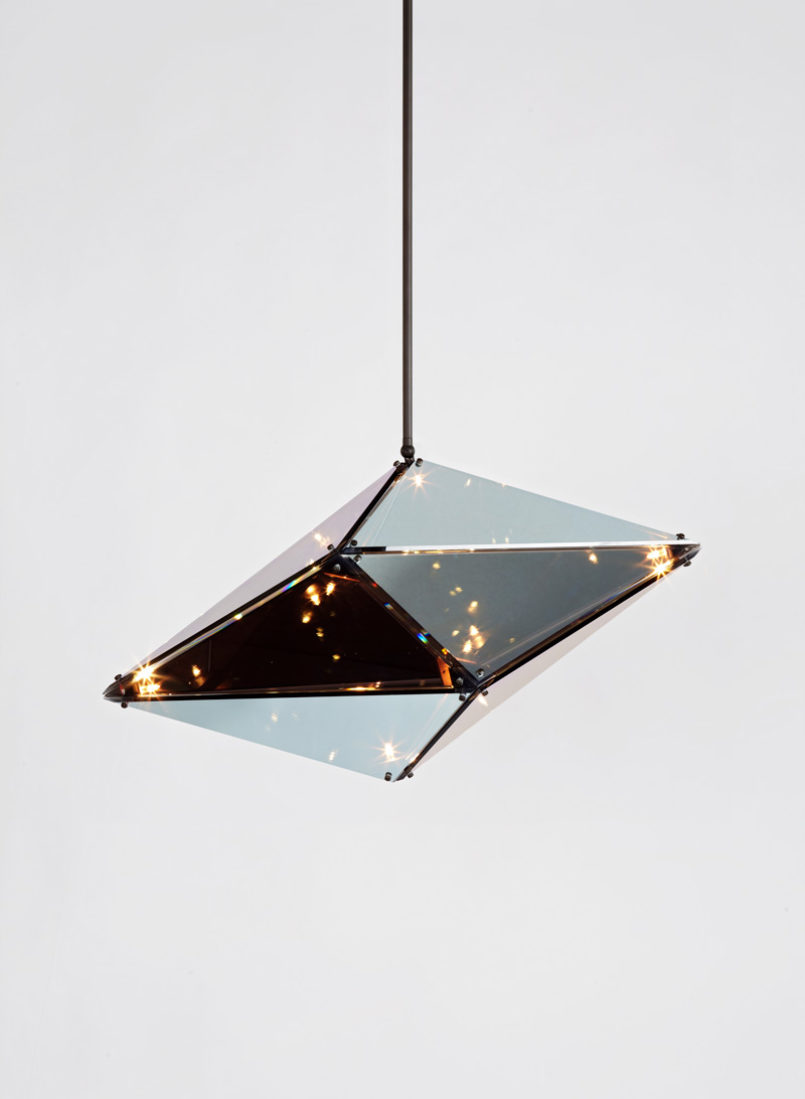
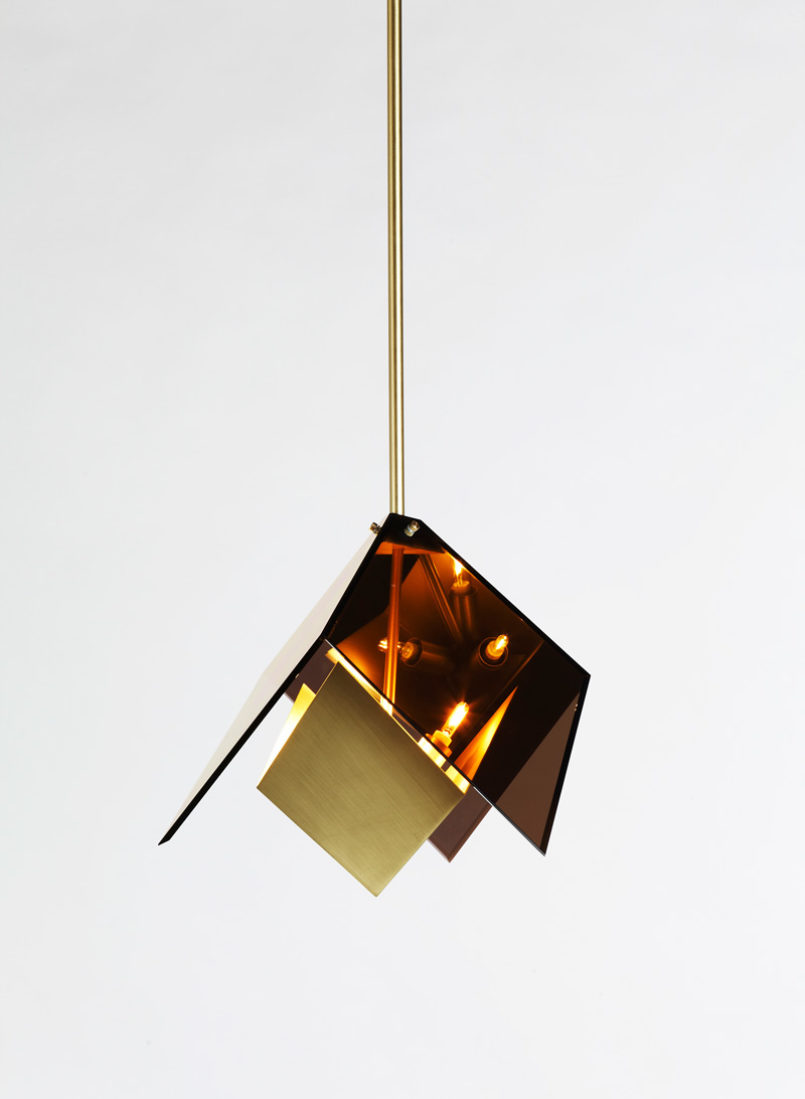
Lighting helps me make sculptures, but I also really like having boundaries: like it has to light up. I get structure and I get geekery.
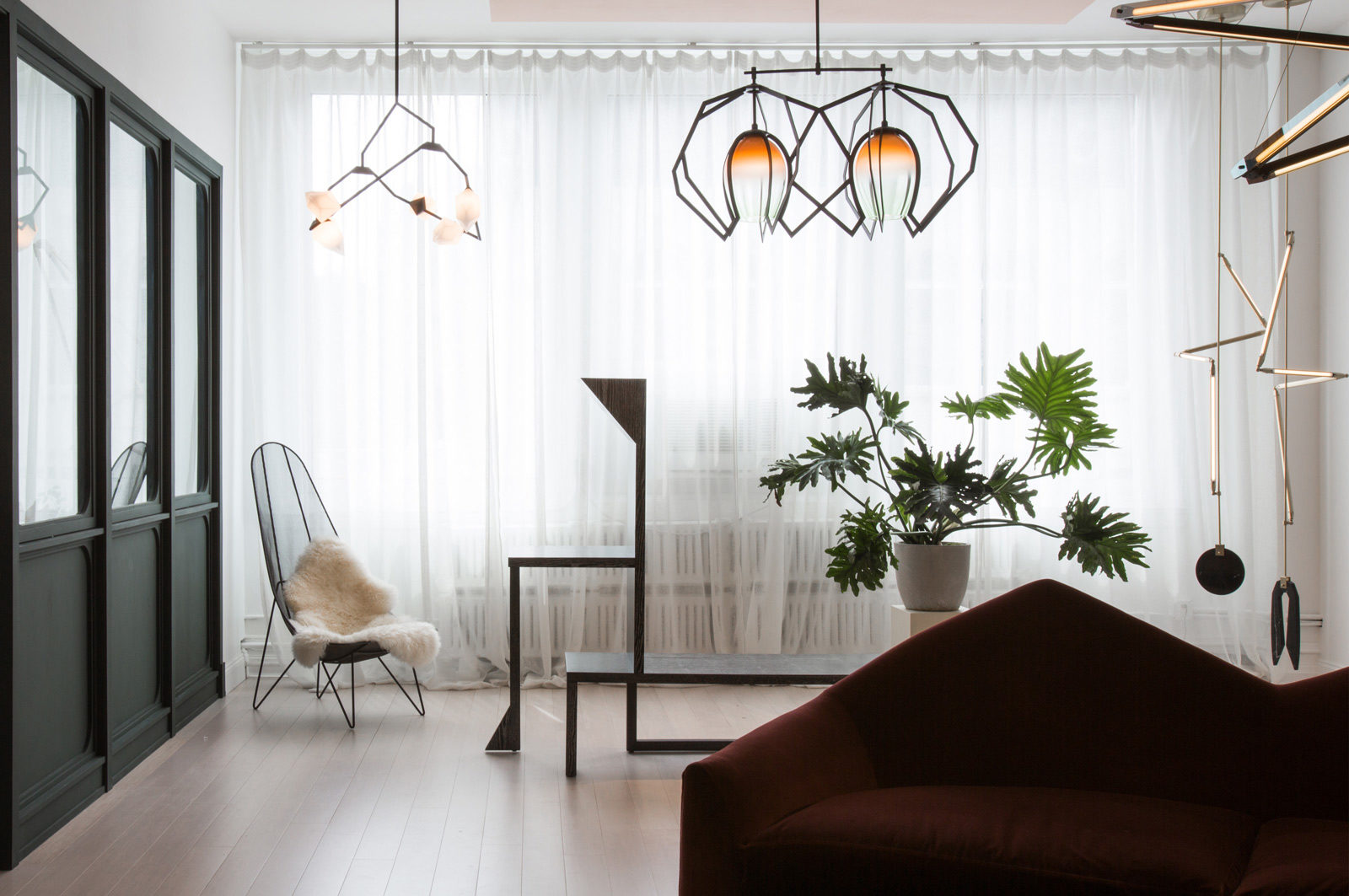
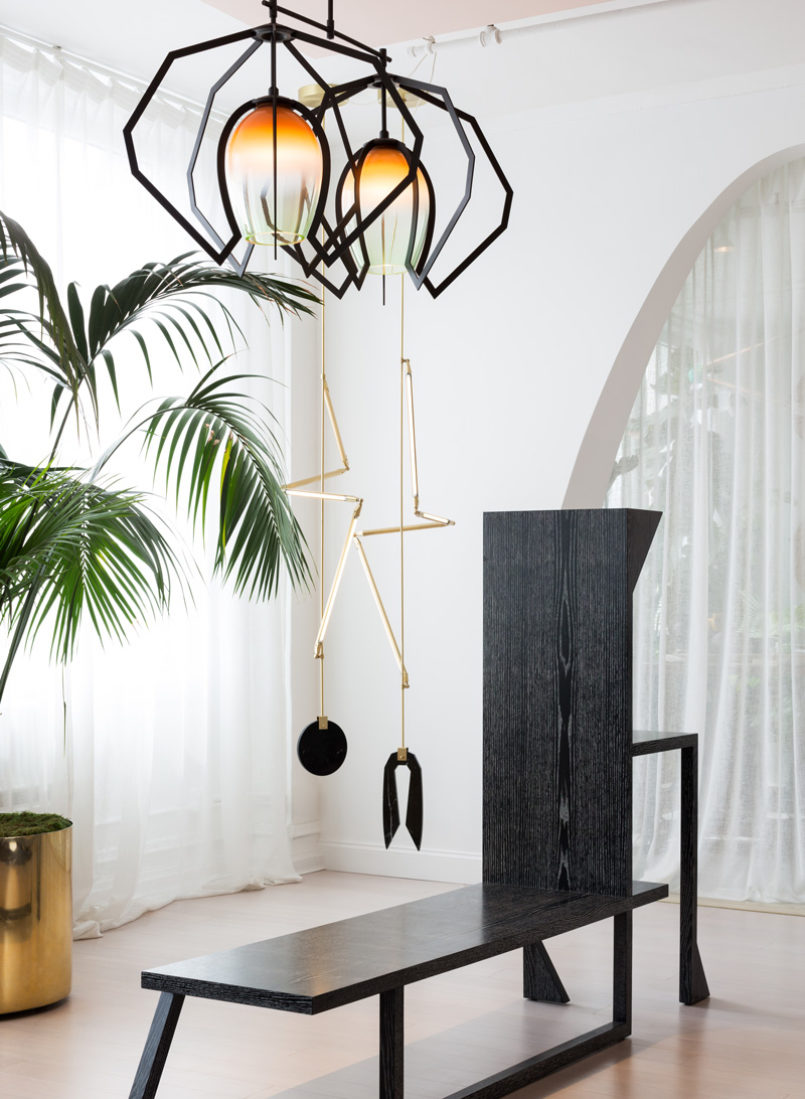
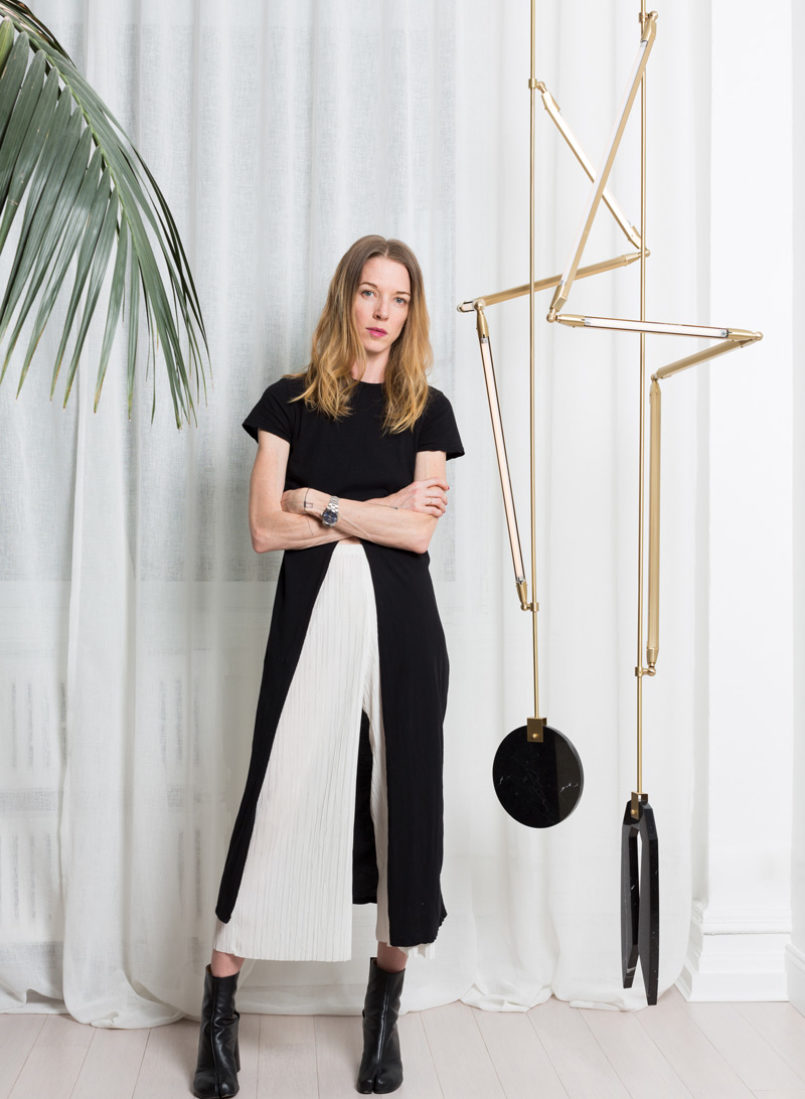
There is also an organic aspect to Brittain’s work, which she calls creatureness. “When I respond to other people’s work and when I like the work that I make, it has some ‘creatureness’ to it.” The Creature-ist light in the shop, I thought, was the lamp called “Vise.” It hangs from the ceiling with an arachnoid elegance that should be reserved for the homes of the bold and confident.
After we go from Mercury to pursuing the work she has in stock, I’m treated to a glimpse into her office where she concocts what’s next, and witness the germ before it becomes a full idea. Brittain has been crafting rigid plane origami cut out of thick paper. I’m not familiar with rigid plane origami, so she explains that “It’s how they’re beginning to make solar panels that they launch into space. In normal origami, you don’t have to think about thickness or where you’re hinge point is.” While she doesn’t know how, if, or when this will become a light, she is excited by the fact that “It’s the first lighting project where light isn’t the starting point. This is about wanting to make a form. That being said, years ago, I was obsessed with wanting to make a prism machine.” The prism machine would have been (and may yet be) akin to Theo Jansen’s wind walking creatures that meander along beaches, but in her case, they would involve light and prisms. To fully visualize what this would look like this would require Brittain’s visionary skills. Somehow, she suspects, her work with rigid plane origami could connect with the prism project because it offers a new way to think about linkages. “I don’t know if this is going to be a piece of glass? Is it brass and glass and light? is this going to be my prism machine?”
I realize I’m am witnessing the process by which Brittain’s curiosity begins to transform into a material form. Ultimately, I suspect, it is this process that gives her work as a whole such depth; there is thought, exploration, and experimentation behind each design.
